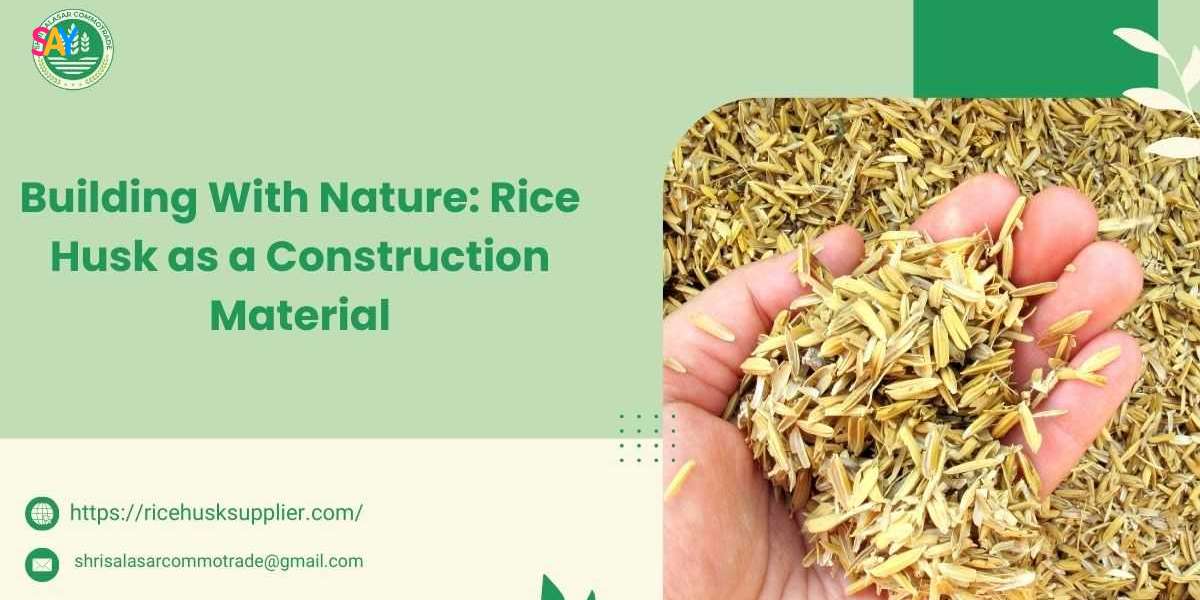Building With Nature: Rice Husk as a Construction Material
Rice husk, the protective outer layer of rice grains, is an abundant agricultural byproduct. Traditionally considered waste, it has garnered attention for its potential in sustainable construction. Utilizing rice husk supplier not only addresses waste management issues but also offers eco-friendly alternatives to conventional building materials.
Composition and Properties of Rice Husk
Rice husk comprises approximately 20% of the weight of harvested rice. Its composition includes:
- Silica: About 20%, contributing to its durability and resistance to pests and decay.
- Lignin and Cellulose: Provide structural strength and rigidity.
- Low Bulk Density: Makes it lightweight, beneficial for certain construction applications.
When combusted under controlled conditions, rice husk yields rice husk ash (RHA), rich in amorphous silica, which exhibits pozzolanic properties—reacting with calcium hydroxide to form compounds possessing cementitious properties.
Applications in Construction
1. Concrete Production
RHA can replace a portion of Portland cement in concrete mixes. Studies indicate that substituting 10–20% of cement with RHA maintains or even enhances concrete performance due to its high pozzolanic activity. Benefits include:
- Improved durability and strength.
- Reduced permeability.
- Lower heat of hydration, minimizing thermal cracking.
2. Lightweight Bricks and Blocks
Incorporating rice husk into brick and block manufacturing results in lightweight products with good insulation properties. These bricks are suitable for non-load-bearing walls and offer thermal and acoustic insulation benefits.
3. Insulation Panels
Rice husk panels have been developed for building insulation purposes. Research demonstrates that these panels provide:
- Thermal Insulation: Comparable to conventional materials, aiding in energy efficiency.
- Acoustic Insulation: Effective in reducing noise transmission.
- Environmental Performance: Lower embodied energy and greenhouse gas emissions compared to traditional materials.
4. Fiber-Reinforced Composites
Rice husk fibers can be combined with polymers to create fiber-reinforced composites. These materials exhibit:
- High tensile and flexural strength.
- Resistance to moisture and pests.
- Applicability in decking, cladding, and furniture.
5. Soil Stabilization
RHA can stabilize soils for road construction and foundations. Its pozzolanic properties enhance soil strength and durability, offering a cost-effective solution for infrastructure projects.
6. Bagwall Construction
Rice-hull bagwall construction involves filling polypropylene bags with rice husks and stacking them to form walls. This method offers:
- Low-cost housing solutions.
- Good thermal insulation.
- Fire resistance when treated appropriately.
Environmental and Economic Benefits
- Waste Utilization: Repurposing rice husk reduces environmental pollution and landfill usage.
- Energy Efficiency: Rice husk-based materials often require less energy to produce than conventional materials.
- Cost Savings: Utilizing locally available rice husk can lower material costs, particularly in rice-producing regions.
- Carbon Footprint Reduction: Substituting cement with RHA in concrete can significantly reduce CO₂ emissions associated with construction.
Challenges and Considerations
- Quality Control: Variability in rice husk and RHA properties necessitates standardized processing methods.
- Durability: Long-term performance data is essential to ensure the reliability of rice husk-based materials.
- Acceptance: Building codes and industry standards need to recognize and incorporate rice husk materials to facilitate widespread adoption.
Conclusion
Rice husk presents a promising, sustainable alternative in the construction industry. Its versatility, coupled with environmental and economic advantages, positions it as a valuable resource in the pursuit of eco-friendly building practices. Continued research and development, along with supportive policies, can enhance its integration into mainstream construction.




